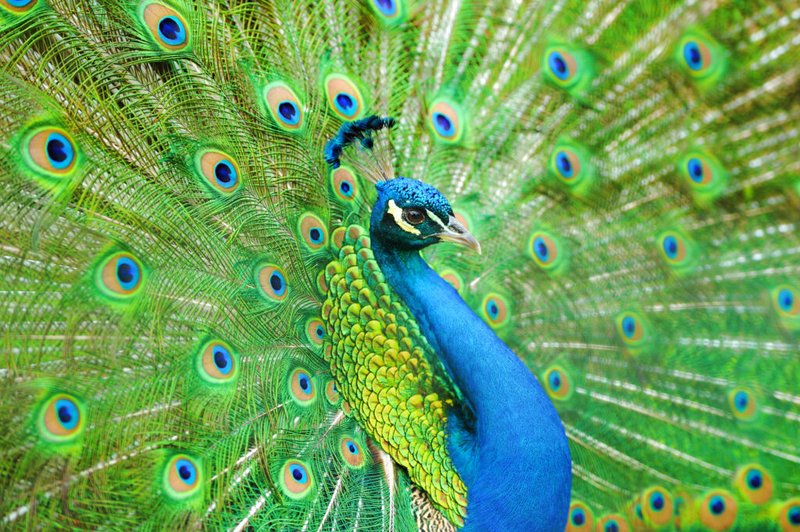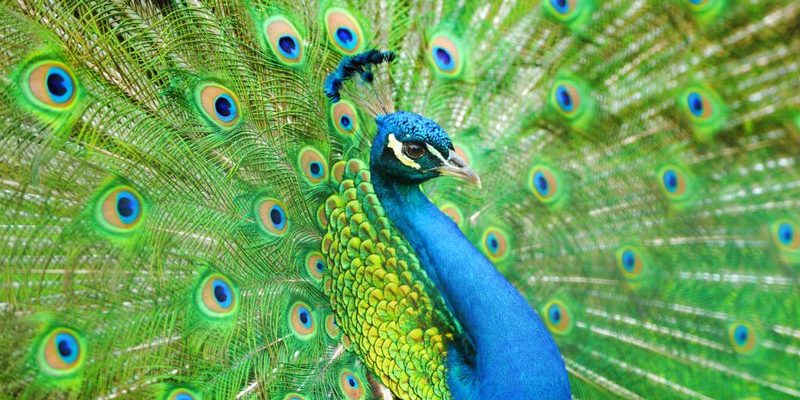
Let’s dive into the world of peacocks and explore what makes them unique compared to birds like the pheasant and the quail. Just like comparing different types of coffee, where each brew has its own flavor and aroma, these birds showcase various traits that make them stand out. Grab your favorite beverage, and let’s explore these beautiful creatures together!
What is a Peacock?
Peacocks, specifically the male of the species known as *Pavo cristatus*, are known for their extravagant tail feathers, or “train.” These feathers can measure up to six feet long and are adorned with vibrant blue and green iridescence. When they display their feathers, it’s not just for show; it plays a key role in mating rituals. A peacock’s ability to attract a mate is directly related to the size and quality of its display. Imagine a bachelor showing off his new sports car to impress potential partners—it’s much the same!
Peacocks are native to South Asia but have been introduced to various parts of the world for their beauty. They thrive in forested areas, grasslands, and even near human settlements. What’s interesting is that, unlike many birds that fly extensively, peacocks tend to be ground dwellers. They can fly, but it’s more like they take short flights to escape danger or reach a high perch to roost for the night.
Peacocks vs. Pheasants
Now let’s look at the pheasant, a bird that’s often confused with the peacock. Pheasants come in many species, but the common pheasant (*Phasianus colchicus*) is the most recognizable. They share some similarities with peacocks, particularly in their vibrant plumage and ground-dwelling habits. However, there are key differences between these two birds.
One major difference is their mating displays. Pheasants don’t have the dramatic fanned tail that peacocks do. Instead, they rely on their coloration and vocalizations to attract mates. While a peacock’s colorful feathers are like a red carpet event, a pheasant’s display is more subtle, akin to a cozy dinner date. Both birds are terrestrial, but pheasants are generally more adaptable to colder climates.
Coloration and Habitats
Coloration is another area where these birds diverge. While peacocks flaunt blues and greens, many pheasants have earthy tones—think browns, golds, and reds that help them blend into their surroundings. This camouflage is vital for survival, allowing them to hide from predators.
In terms of habitat, both birds prefer open areas where they can forage for seeds and insects. However, peafowl are often seen in more tropical environments, while pheasants can be found in a variety of climates, from forests to grasslands.
Peacocks and Quails
Moving on, let’s chat about quails. These petite birds, like the California quail (*Callipepla californica*), are quite different from peacocks, both in size and aesthetic. Quails are small, plump birds known for their characteristic “topknot” feathers on their heads. Where peacocks strut around with pride, quails tend to be more understated, often relying on their ability to hide rather than display.
Quails are ground-nesters, and their eggs are often laid in shallow scrapes, making them vulnerable to predators. Unlike peacocks, which are social during breeding, quails are more about family units. You might spot a mother quail leading her brood through the underbrush, while a peacock might flaunt his feathers to a crowd.
Behavioral Differences
When it comes to behavior, quails are known for their quickness and ability to take off at a moment’s notice. They have a “run first, ask questions later” approach. Peacocks, on the other hand, are often less skittish, showcasing their beauty and making a more theatrical presence.
In habitat preference, quails prefer dense cover, which helps them hide from predators. They thrive in bushes and grasses, whereas peacocks like to strut their stuff in more open areas where their beautiful tails can be seen from afar.
Peacock Varieties
Not everyone knows that there are different kinds of peacocks beyond the common blue one! There are varieties like the Indian peacock, green peacock (*Pavo muticus*), and even white peacocks. Each type has distinct traits, both in appearance and behavior.
The green peacock, for example, boasts an even more impressive plume of feathers, with a mix of greens and golds. They are typically found in Southeast Asia and can be a little more shy and elusive than their blue cousins. This means you might have to look harder to see their beautiful displays.
On the other hand, the white peacock is a stunning sight to behold. Their lack of pigmentation gives them an ethereal beauty that makes them look almost ghostly. However, being white can make them more vulnerable to predators, as there’s less camouflage in the wild.
Conservation Status
Sadly, many peacock species are facing threats from habitat loss and hunting. The green peacock, in particular, is listed as vulnerable, with its population declining due to deforestation and poaching. Conservation efforts for these birds focus on preserving their habitats and raising awareness about their ecological importance.
For example, many wildlife sanctuaries are dedicated to protecting these stunning creatures and educating the public about their beauty and role in biodiversity.
Peafowl in Culture
Peacocks have captured human imagination for centuries, appearing in various cultural symbols and stories. In places like India, they’re seen as a symbol of grace and beauty. For instance, Hindu mythology often features the peacock as a vehicle for the goddess Saraswati, representing wisdom and knowledge.
In art, peacocks are depicted in everything from paintings to fabrics, symbolizing elegance and luxury. It’s like they’ve taken their beautiful feathers beyond the bird world and into our hearts and homes.
Comparison With Other Birds in Folklore
While peacocks are celebrated for their splendor, other birds have their own symbolic meanings. For instance, doves represent peace, and eagles embody strength. This gives us a broad sense of how different species resonate in our stories and values. Understanding these connections helps us appreciate the diversity of the avian world, much like how every dish on a menu brings its own flavor to the table.
In wrapping up our exploration of peacocks and their bird relatives, it’s clear that these animals offer more than just a pretty display. From their striking appearance to their unique behaviors and cultural significance, peacocks stand out in many ways. Whether you admire the bold colors of a peacock or the clever camouflage of a pheasant, each bird plays a vital role in our ecosystem.
So, the next time you catch sight of a peacock displaying its glorious feathers, or a quail scurrying through the underbrush, take a moment to appreciate these fascinating creatures and the intricate differences that set them apart. Just like you and me, each bird has its own story to tell, and that’s what makes our world all the more beautiful.

